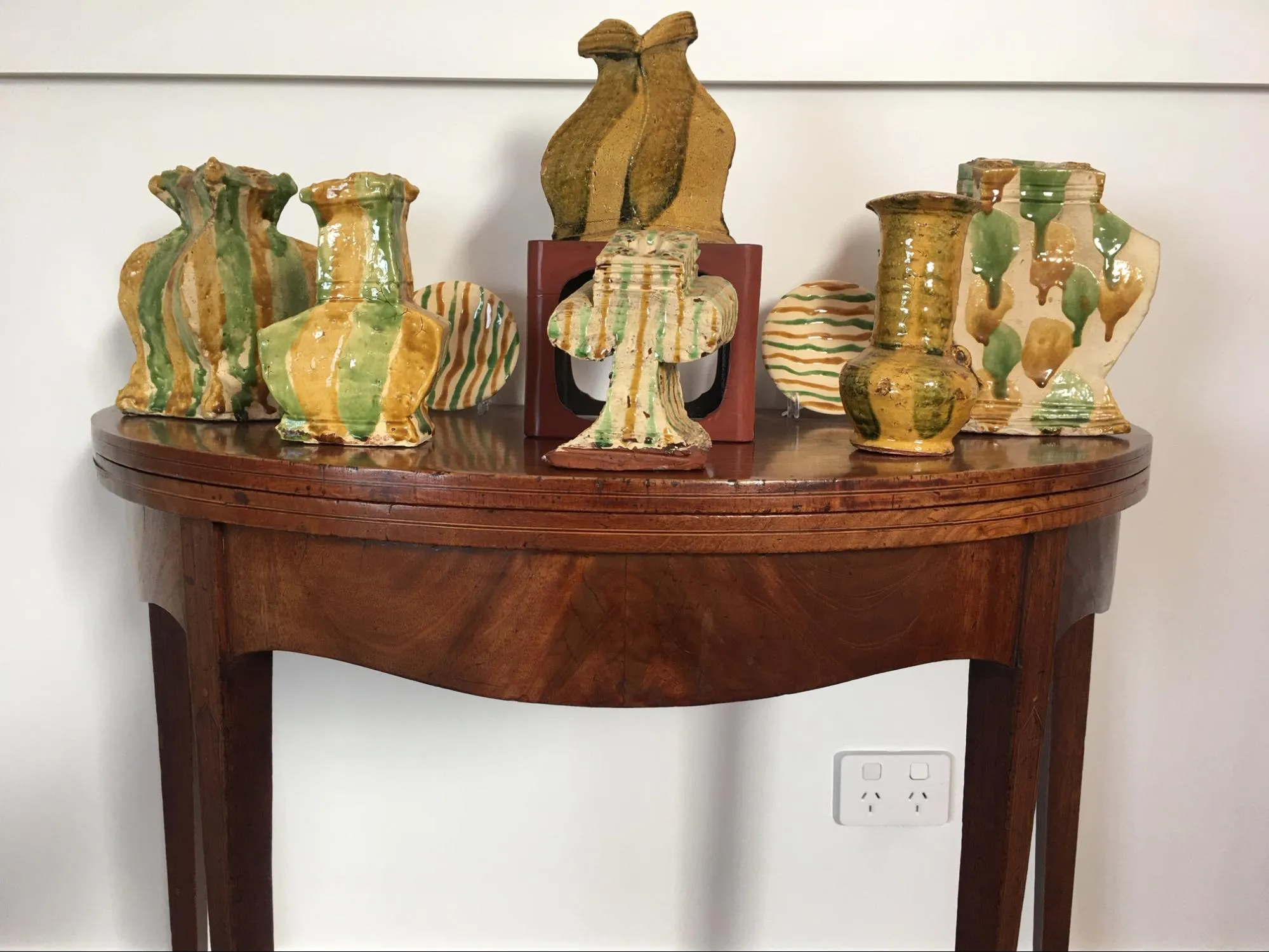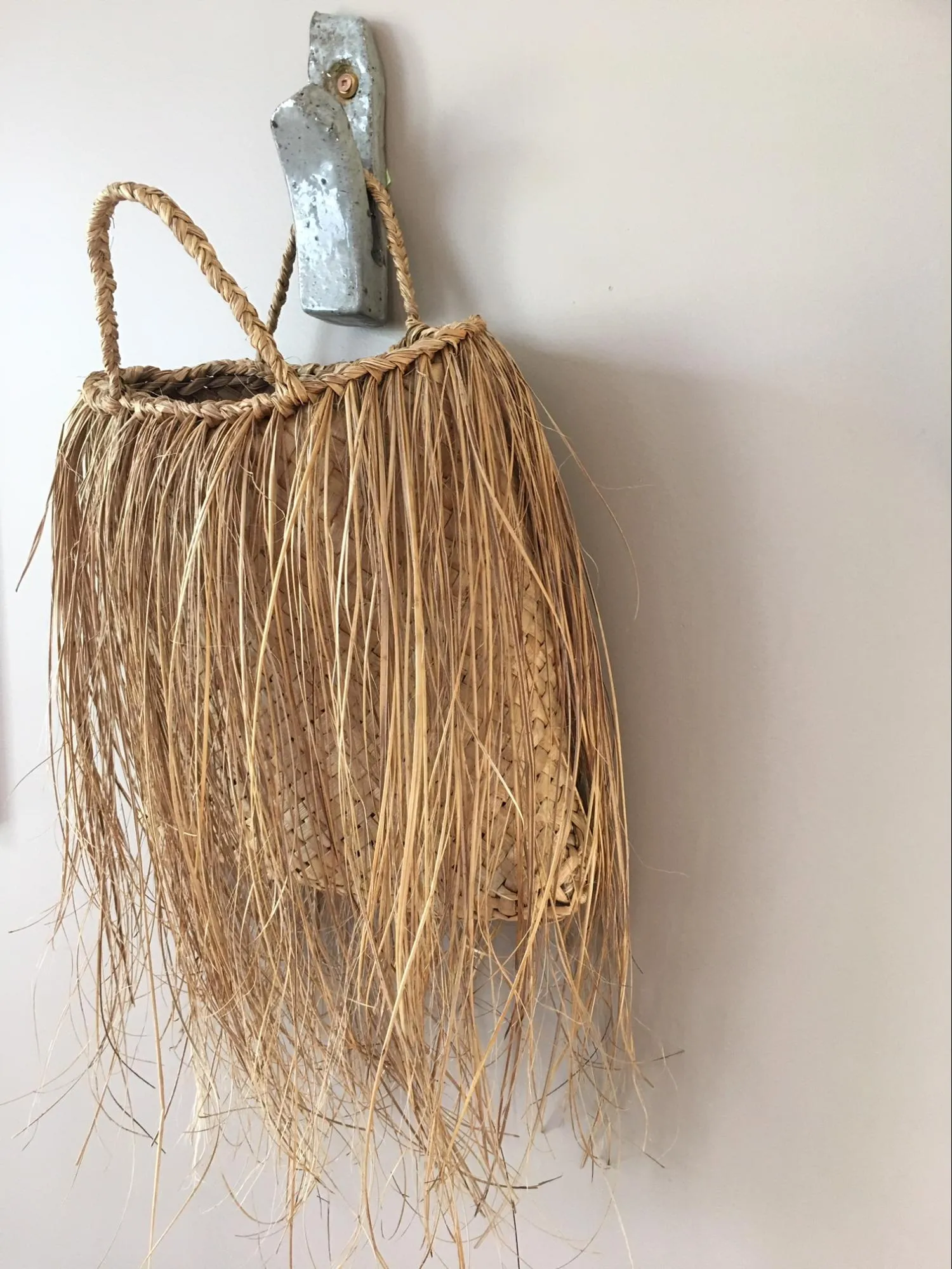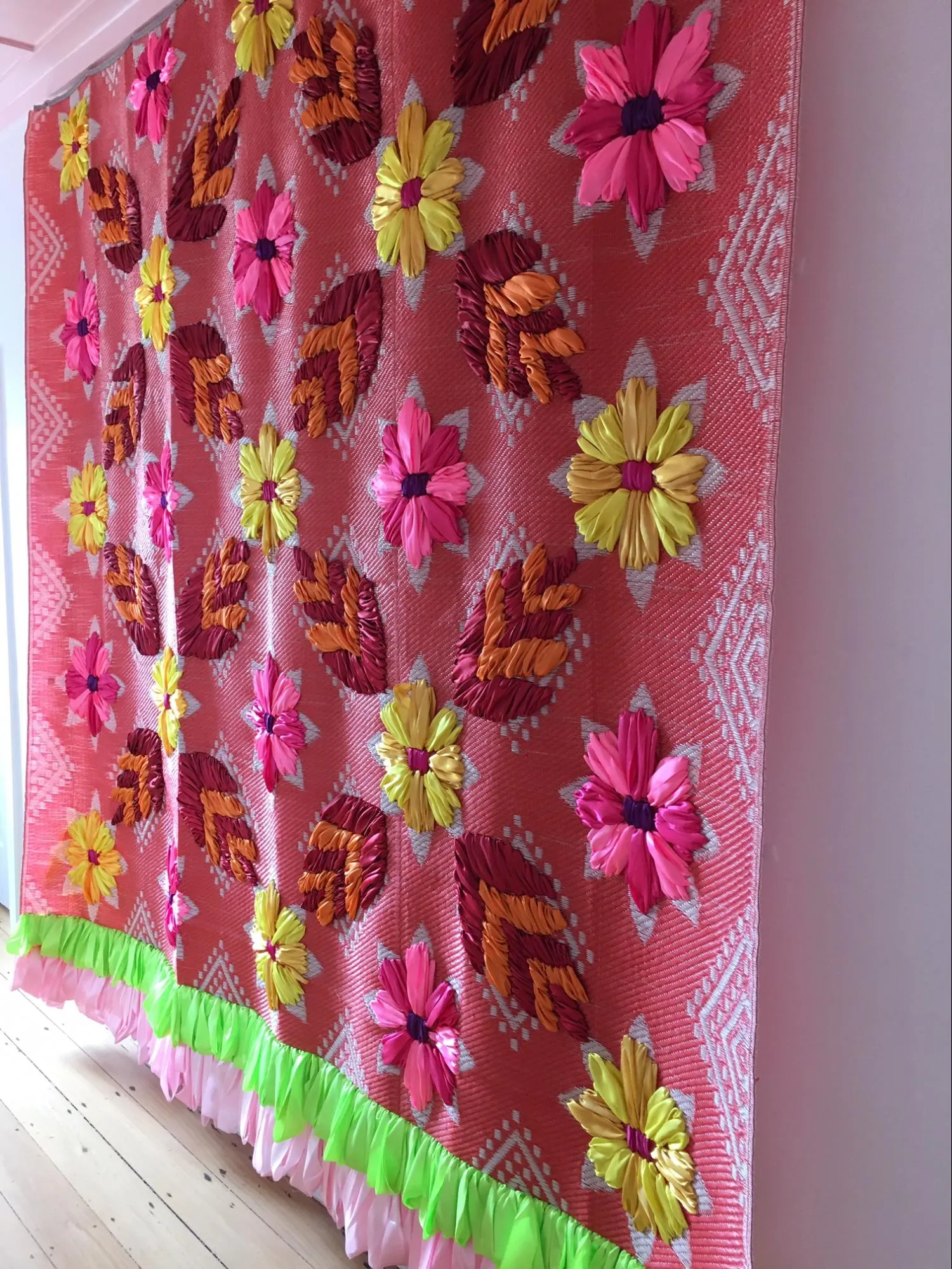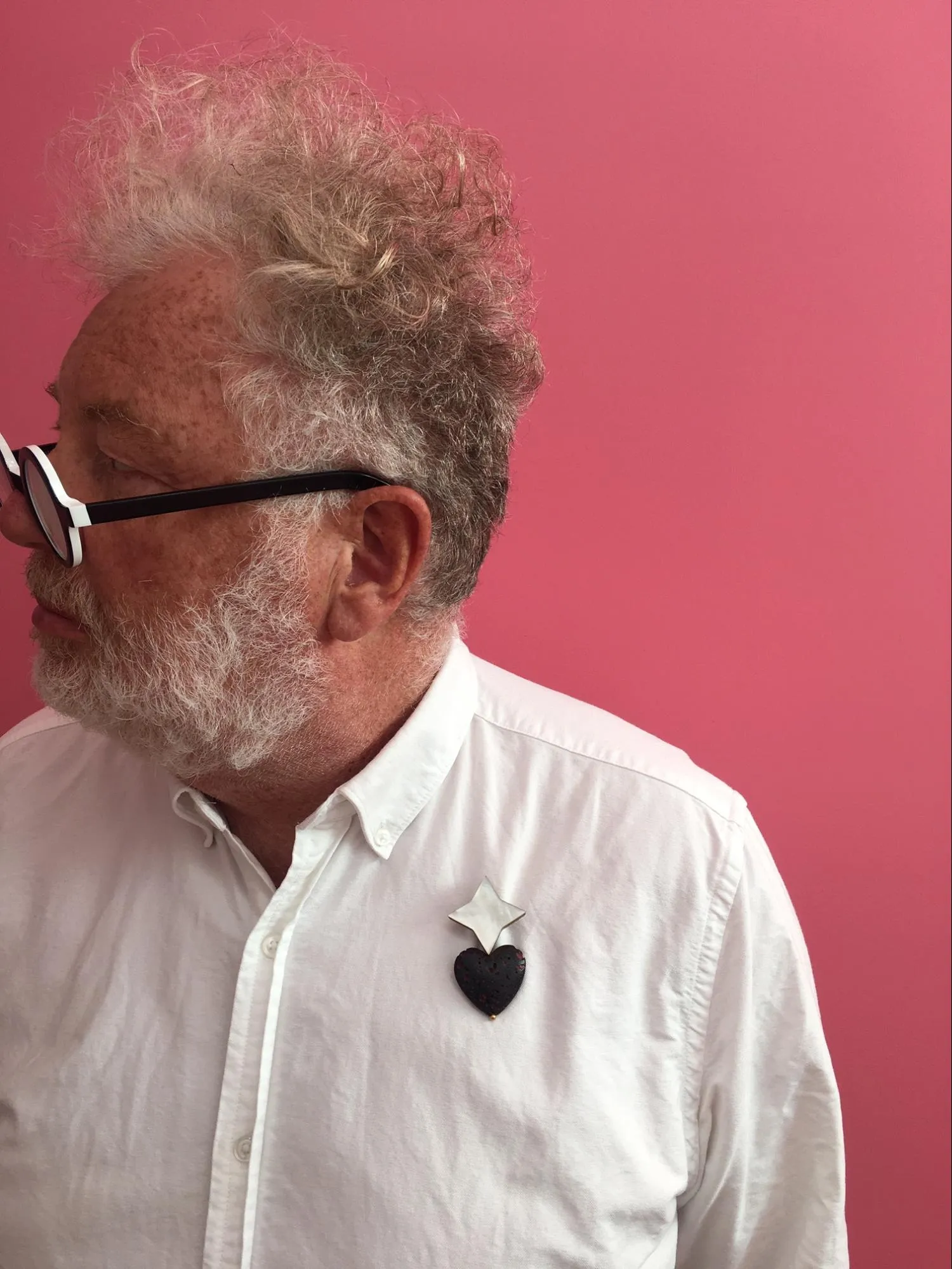Decades of Dedication
Written by
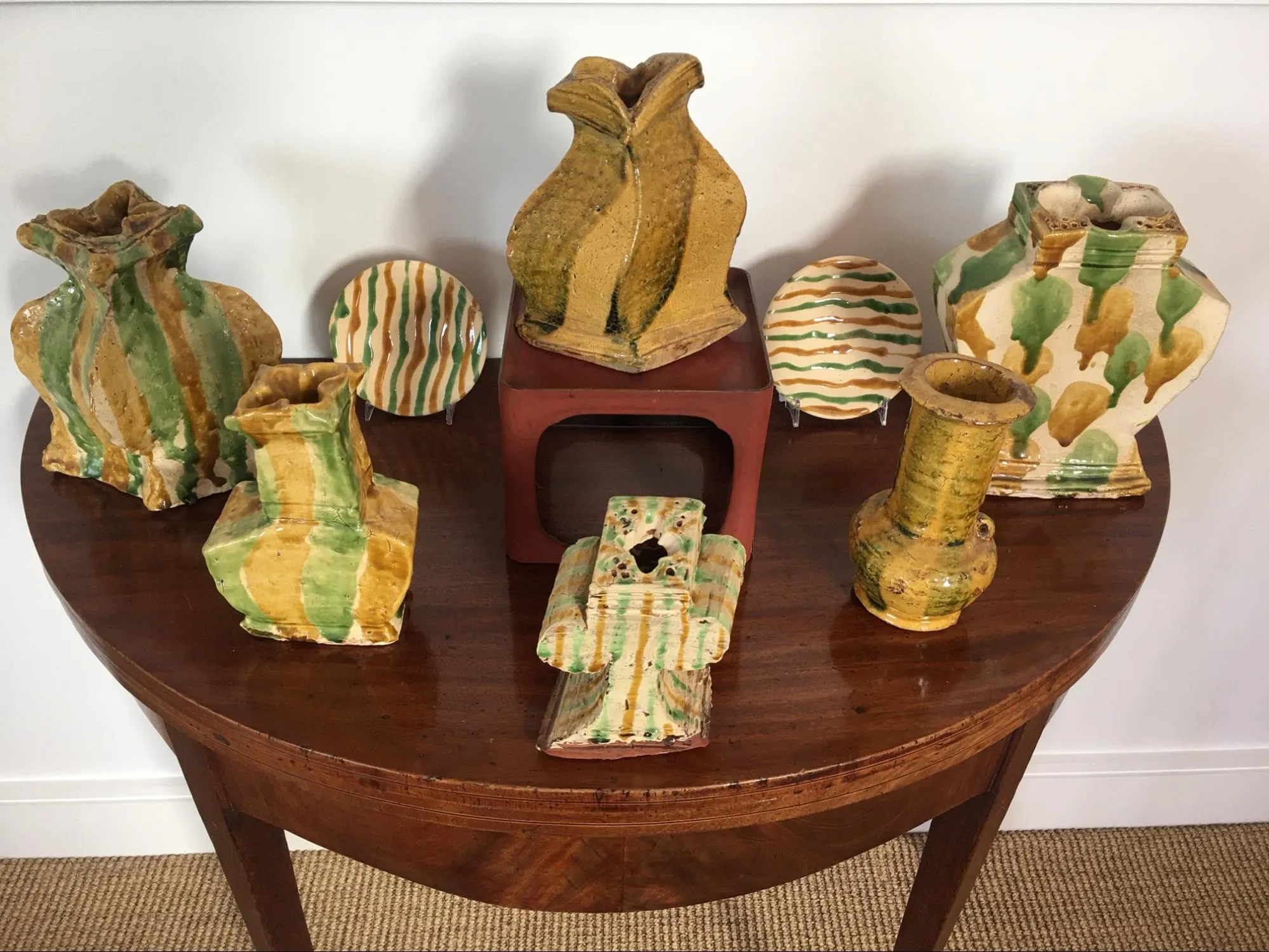
The days of visiting galleries and exhibitions are temporarily on hold. The lost opportunity to get motivation from walking through new spaces and soaking in different works is a void The Big Idea wants to help fill.
Our ‘House Visits’ series takes you into the homes and working spaces of people in the creative world, to see what they have collected on their travels, what it means to them and what they’re using as inspiration inside their own four walls.
Philip Clarke - Auckland
Since leaving Objectspace in 2015 I’ve joined the boards of a number of arts and cultural organisations and am currently the Chair of the Blumhardt Foundation. Many years ago I read some Australian research about arts volunteering. The group of people who were by far the greatest arts volunteers were arts professionals who regularly worked extraordinary hours. I’m very happy to describe myself as a volunteer. I’m currently a regular contributor to Art News and Ceramics NZ.
I’m semi-retired and at home most of the time so on one level there hasn’t been a huge change. My board responsibilities haven't really stopped, and in some cases has intensified as we think together about how we’re dealing with circumstances right now.
The Blumhardt Foundation has responded really quickly to the plight of makers who were losing opportunities. I had the idea for what quickly became, with the support of other trustees, our Blumhardt Foundation Instagram Artist in Residence Programme where selected artists from all over are paid to take over our Instagram account. It’s a means of providing them with some small direct support whilst they have the chance to promote themselves.
Richard Parker Collection
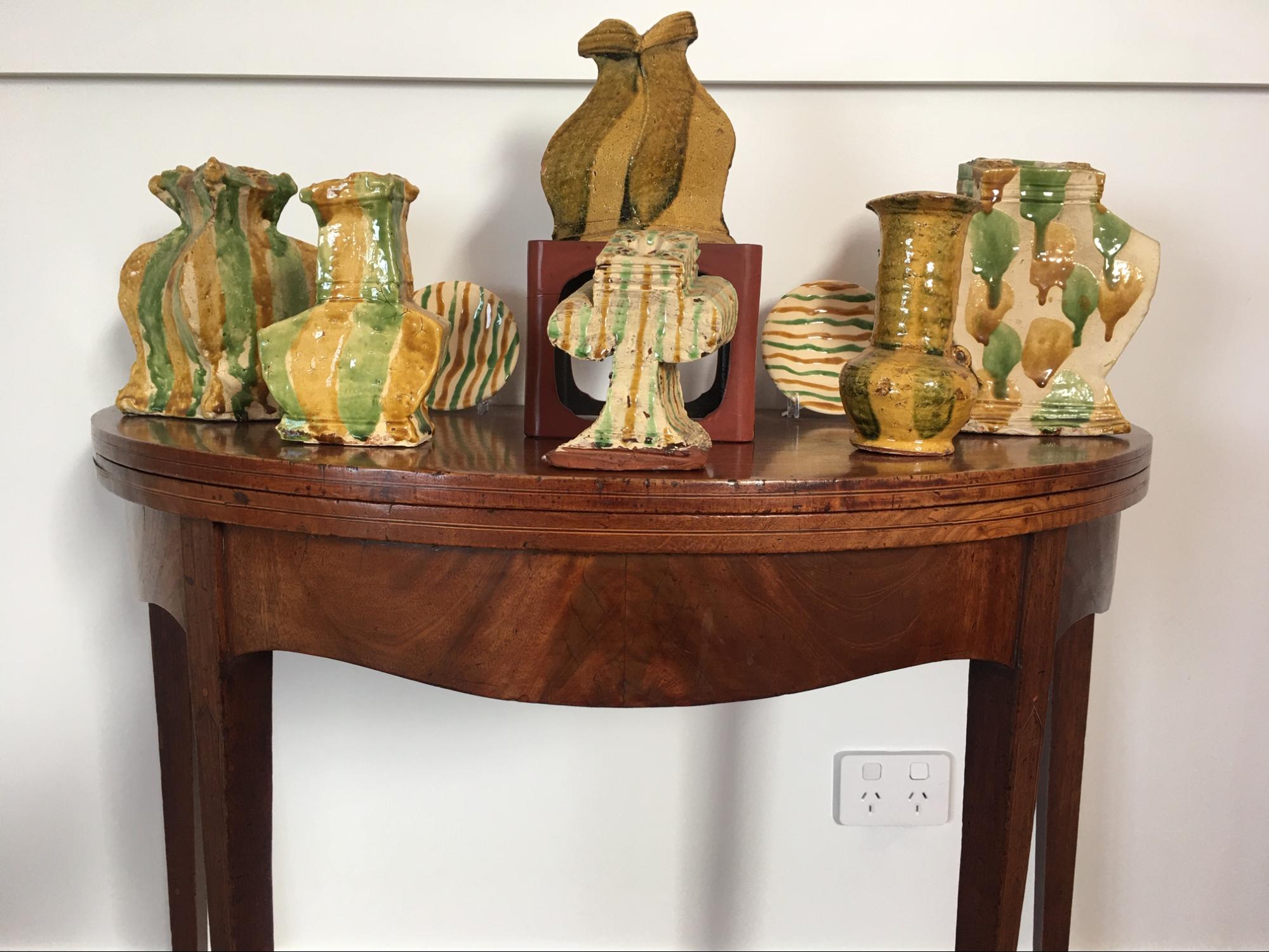
Despite the different forms, it’s easy to see that these works are related, they’re all by Northland-based potter Richard Parker. There’s a few things I can say about this group. I think it is a fine grouping as it took me 30+ years to assemble these particular 7 pieces. This was done primarily by purchases but also by gift and inheritance.
So as well as evidence of my ‘relationship’ with Richard Parker these works represent relationships with family, friends, galleries and auction houses, all of which are relationships of sentiment to me. I’ve got small collections of the work of two other potters, the late Jim Greig and US potter, and occasional NZ visitor, Jeff Oestrich, that have taken me just as long to assemble.
I’ve got about 20+ Parker works, some of which appropriately live in the kitchen. I’ve grouped these works as they are for a reason. They stand on a late eighteenth-century table (another enthusiasm) rather like how a group of late eighteenth-century ceramic figures might be displayed. My point being to accord the same respect and value to the work of an outstanding contemporary potter as is usually accorded to more conventionally prized ceramics.
Usually, my most favourite objects are those that have been most recently acquired, ceramics by Glenn Barkley and Peter Hawkesby fall into this category. But probably my all-time most favourite ceramic object, from a collection of about 75 works, is the Parker pot on the far right.
Like many alluring works of art, I find Parker’s works alive with paradox. He invented the way they’re made while referencing thousand-year-old Chinses T’ang pots. The combination of a flat cream slip glaze with luminous green and gold glazes on forms that might be described as architectonic yet decorated, intensively, with spots and stripes as if they were flat surfaces. These paradoxes are all present in my favourite pot.
Martino Gamper Hook and Tangimoe Clay Kete
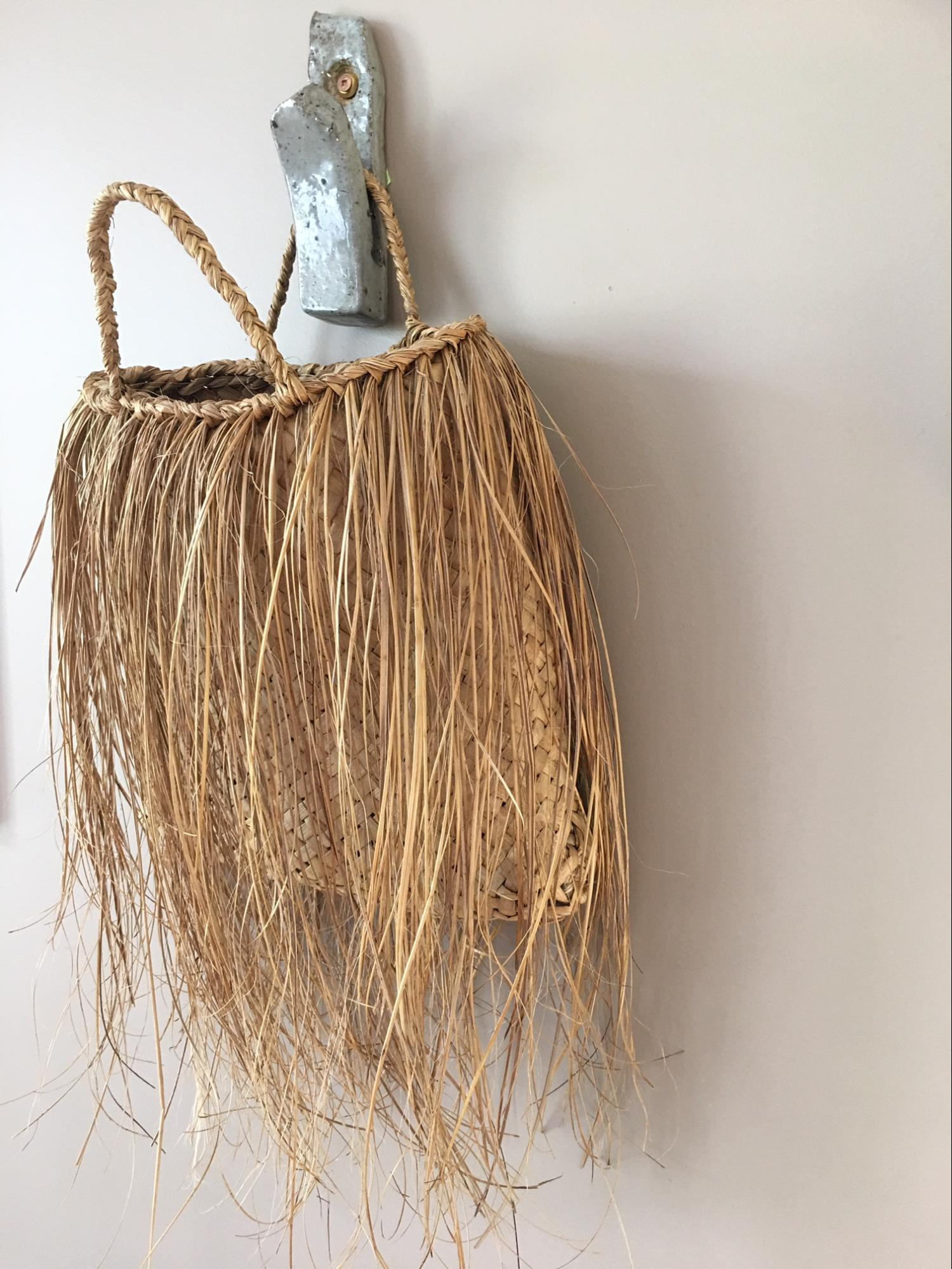
I bought this ceramic hook by London-based, but frequent NZ visitor, Martino Gamper at his 2019 exhibition Hookaloti at Michael Lett Gallery. I remember being physically thrilled each time I visited the exhibition. I love the theme and variation approach found in Gamper’s work such as 100 Chairs in 100 Days which I was lucky enough to first see in London in 2007.
Gamper has said about his work ‘‘they’re just everyday things’’. I’ve always been a firm believer that any subject, in the hands of someone with something interesting to say, can be engaging. And if it is interesting, it is more interesting to explore the theme with variations. Gamper’s dozens and dozens of handmade hooks were wooden, ceramic, resin and metal.
My ceramic choice was made at the late Barry Brickell’s Driving Creek Pottery in Coromandel. When I bought it, I thought I’d display it as an artwork, it being a tad more expensive than a Mitre 10 hook. But then I thought it was stupid to deprive it of any sense of functionality so it is a working hook, supporting an example of Opotiki-based Tangimoe Clay’s hairy kete. I’ve been aware of Tangimoe’s irreverent but masterful work for quite a while and was lucky to find this, and two other hairy kete, in an Auckland community gallery a couple of years ago. I bought all three on the spot and the other two hang in the homes of my children.
Serene Timoteo Multimedia work
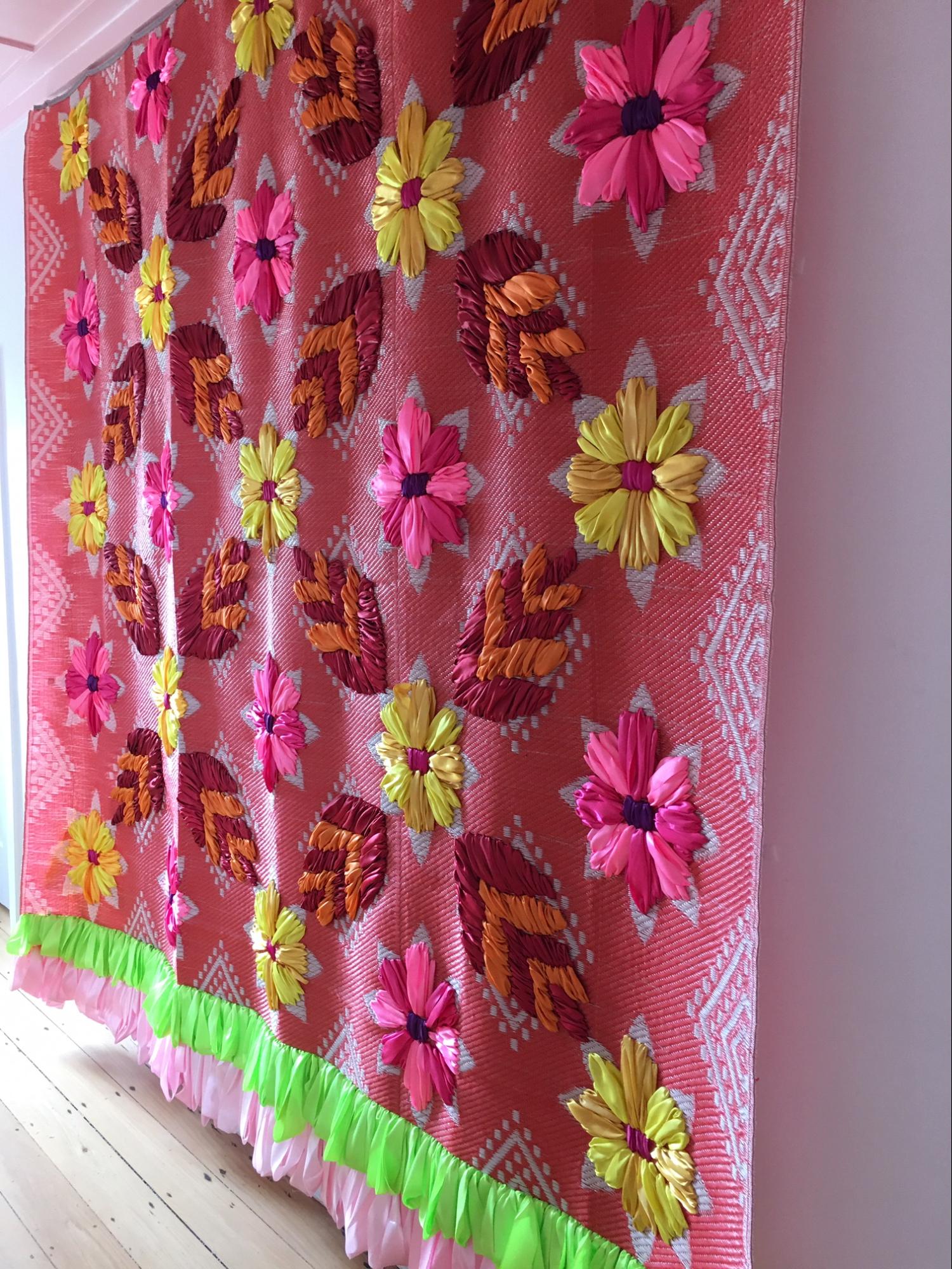
I’m a sucker for colour and I’m not intimidated by a large scale but this the largest work we own, it’s 2.4 m high and 2.8 m long. I hadn’t heard of new Elam graduate Serene Timoteo when a friend took me to a Corbans Estate Openings where Serene was showing her work. It was an 'a-ha' moment as I’d never seen anything like these before.
It is essentially a plastic mat that has been embroidered upon using wide ribbons. Serene has talked about admiring the skills of traditional Samoan makers but of not possessing this knowledge, nor the patience to acquire it. She’s been very keen to “speak to my own generation” with her ‘Plastic Samoan’ works. These plastic mats are common in Pacific peoples’ homes and she said she wanted to take these familiar objects off the floor and weave colour and phrases into them so that her own generation could relate to them.
Ours doesn’t have the element of text. It hangs in our hall like a huge woven tapestry fluttering in the breeze when the front door is open. It's a reminder that we are living in Aotearoa New Zealand in the twenty-first century and that plastic is still a large part of our material culture.
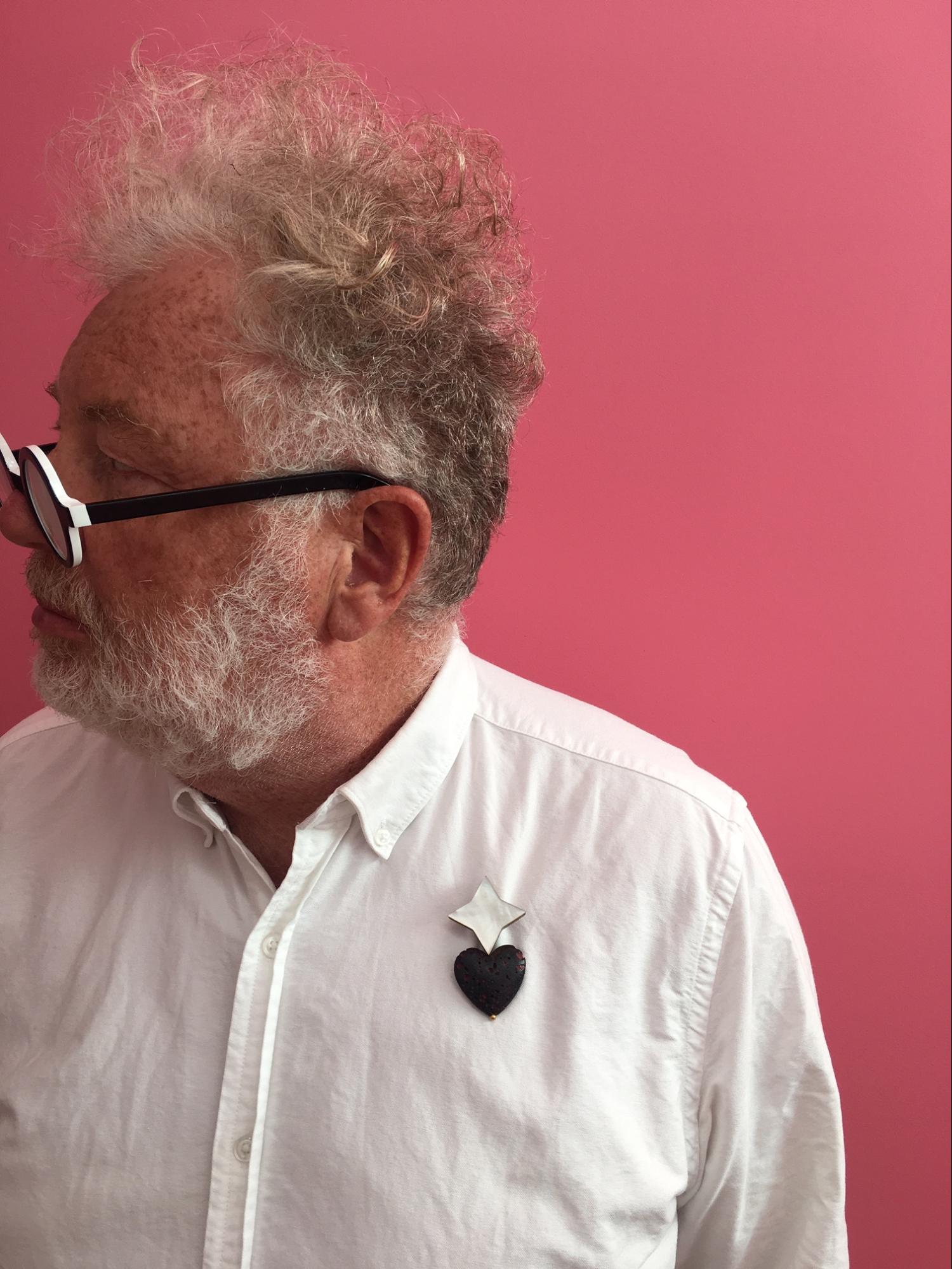
Philip Clarke.
